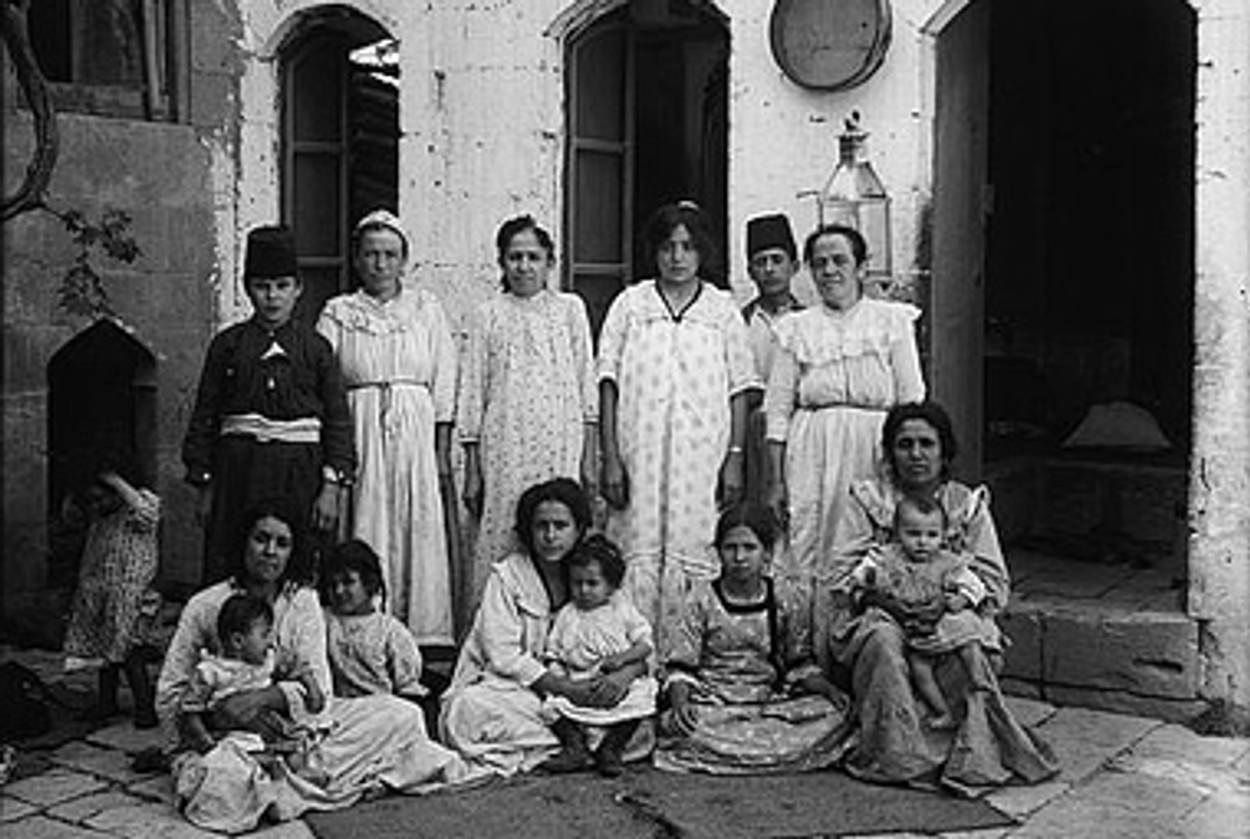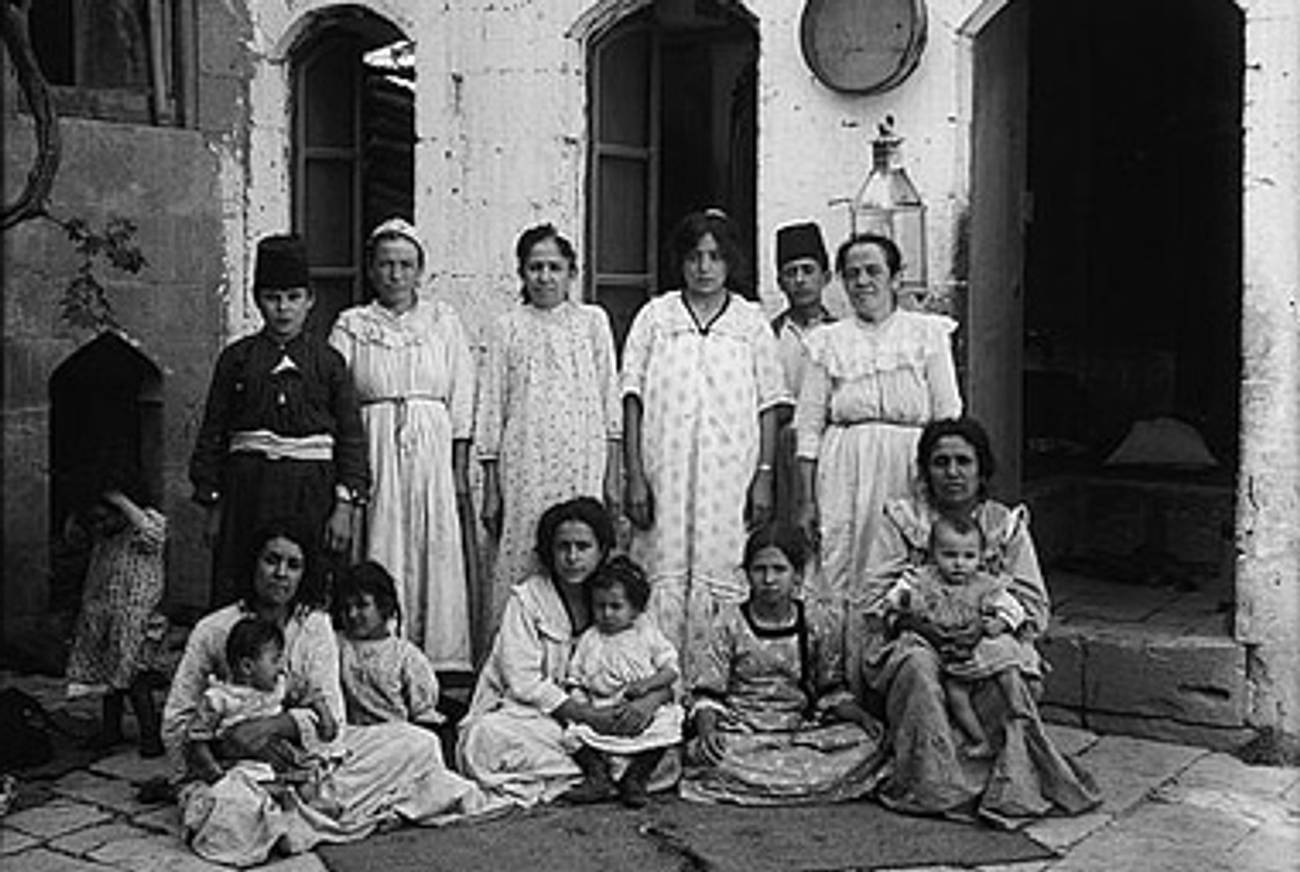Road From Damascus
Struggling to maintain a Mizrahi heritage in an Ashkenazi-dominated culture




I don’t have a Hebrew name. As a preschooler in Hebrew school, this was confusing and humiliating. “What do you mean your name is Bolisa?” my teacher asked. “That’s not Hebrew. Pick something else.” Her name was Faigy, which is Yiddish, but at 5 I didn’t know enough to point that out.
How could I pick something else? As a Syrian Jew, I am named after my mother’s mother. Unlike Ashkenazi Jews, Syrians name their children after their parents, living or dead. Bolisa is an Arabic name that goes back generations in our family, as is Shefia, my mother’s name.
Had the preschool incident been an isolated one, I probably would have forgotten it by now, but as I’ve grown into adulthood, I’ve found it indicative of the general state of Judaism in America, which is overwhelmingly dominated by Ashkenazi tradition. My Ashkenazi in-laws have a collection of Jewish books on their coffee table, books on Jewish humor, cooking, and tradition. I peruse them and find no trace of my culture. Recently, my mother-in-law added a book titled The Sephardim to the pile. While I appreciate her intention, it saddens me that Sephardic Jews (and here I use the term loosely, describing all Jews who lived under Muslim rule) need their own book—that we have to exist outside of the norm rather than as part of the whole.
It’s not enough to define myself as not being Ashkenazi; defining oneself against something means, really, being defined by it. The definition must lie in the presence: I am Mizrahi, literally a Jew from the East, a product of Arabic culture, and I must find a way to know and own my story and preserve it for my children.
Even today, in New York City, some people are shocked when I say I am both Syrian and Jewish. They imagine intermarriage, an illicit love affair, elopement perhaps. I find myself explaining my past and having social conversations that turn into history lessons, especially when I relay all the details: My mother’s grandparents emigrated from Syria in the 1910s. My paternal grandfather escaped to pre-1948 Palestine from Aden, Yemen. There, he met my grandmother, the Iraqi-born daughter of a Turkish mother and a Kurdish father. She and her family had been stuck in Iraq for several years until they could save more money, because the cost of being smuggled into Jerusalem had risen considerably.
Despite this mixture, I identify most with my Syrian side, a result of my parents’ decisions. When I was 9, my mother enrolled me and my three siblings in a Syrian-Jewish day school, where there were two Ashkenazis in my grade. When I was 12, we moved from the mixed Israeli-Sephardic and American-Ashkenazi neighborhood where we lived into the heart of Syrian Brooklyn.
To live in the Syrian community is to be immersed in its traditions, to eat its tangy-sweet meats slow-cooked in tamarind sauce, to speak its Arabic-inflected Hebrew, to sing its Middle Eastern melodies, to dance to the music of the oud, to revere family, and to always have a home open to guests. But it is also to marry young and often forgo higher education to start a family. It can be stifling, and as a young, independent, headstrong girl, I left for college thinking I’d never look back. But as a grown woman, living on the Lower East Side with my Ashkenazi husband and our 2-year-old daughter, I wonder if I’ve lost something. How I can infuse my home with what I love about Syrian culture even as we physically reside outside of it?
If maintaining the heritage is hard, transmitting the history is even harder. At the Syrian-Jewish high school I attended, the Jewish history curriculum—aside from a passage on Maimonides and another on the Damascus Blood Libel—concerned itself with the lives of Jews in Europe, reducing the millennia-old history of my people to a mere footnote. What I know of Sephardic and Mizrahi history is self-taught, the product of months of research while writing a novel. At the same time that I am grateful for all I was able to learn, I’m angry about how far outside the Jewish canon I had to go to find it.
How have Mizrahi Jews fallen so far into oblivion? Where is the record of millennia of history, of Jews who lived in the Middle East and North Africa since biblical times? The community in Aleppo traces its roots to the time of King David. Documents in the Cairo Geniza prove an unbroken Jewish presence in Egypt for 2,000 years. Until 1948, when Israel was founded, 800,000 Jews lived in Arab countries, and another 200,000 lived in Turkey and Iran. About half later moved to Israel, and the other half were scattered around the world. When the veteran reporter Helen Thomas ended her career by telling Jews to go back to Germany and Poland, I wanted to remind her of the thriving Jewish community that once existed in her beloved Lebanon.
Mizrahi Jews, like my grandparents, started leaving the Levant well before Israel’s creation, and those who arrived in the United States were often shocked by what they found. Ostracism of non-Yiddish-speaking Jews was so pervasive in the early 20th century that it’s noted in an exhibit at the Lower East Side’s Tenement Museum. In a tour called “Living History,” visitors are invited into the home of the Confinos, a Greek-Sephardic family who lived in the tenements in 1916. There, a costumed interpreter portraying 14-year-old Victoria Confino answers questions about her old life in Greece and her new life in New York. When I ask her how she feels about Jewish life on the Lower East Side, she sighs and shakes her head. “They treat us like we’re not real Jews because we don’t speak Yiddish,” she says. “And their food,” she shudders. “They don’t use any olive oil; they fry everything in chicken fat.”
In his excellent book The Magic Carpet: Aleppo-in-Flatbush, Joseph A.D. Sutton recounts the tale of the first Syrian Jews to arrive on the Lower East Side in 1910:
During a mid-week prayer service in an Eastern European synagogue, my father, ritually clothed in taleet, a prayer shawl, and tefileen, phylacteries, was approached by an Ashkenazic congregant. Since he did not understand what was being said to him in “plain Yiddish” the man who had spoken to him asked in evident amazement, “Bist du a Yid?” (“Are you a Jew?”). Similar experiences were common.
Sutton details that Syrians weren’t welcomed to worship with their Ashkenazi co-religionists and soon set up their own congregations on the Lower East Side, first in the basement of the Educational Alliance on East Broadway, then at 48 Orchard Street. As they prospered, and as families grew, they left Manhattan for Bensonhurst, Brooklyn.
It’s little wonder, then, that Syrian Jews stick to themselves. The community, now in Midwood, Brooklyn, is often described as an insular enclave. In widely used slang, Syrians play off that early experience by calling Ashkenazi Jews J-Dubs. It’s short for J-W, or simply, Jew, as if to say, “Yeah. We got it. You guys are the real Jews.” They call themselves SY and draw sharp distinction between ours and theirs: language and food, behavior and culture.
Ironically, after eight years of marriage to my husband, and my mother-in-law’s patient insinuations, I probably know more Yiddish than I do Arabic. And though I want to preserve my daughter’s Sephardic heritage, she is also half-Ashkenazi, and that side of her should be celebrated as well.
For now, I think of ways I can keep Middle Eastern tradition alive for her. I’ll show her how to dance to Arabic music at parties, flicking her wrists and shimmying her hips. I’ll feed her grape leaves stewed in apricots, a dish of rice and lentils with caramelized onions. I’ll teach her to stuff filah dough with sautéed spinach and walnuts, folding it into triangles topped with sesame seeds. When Passover comes, she’ll join me in helping my mother and grandmother prepare. We’ll spread grains of rice on the table, inspecting them for hametz, passing them from one woman to the next until they’ve been checked three times and are ready to be served at the seder.
I’ll explain the amulet I pin on her clothes, the hamsika hand-pendant that wards off the evil eye. I’ll recount the story of the Arabic-inscribed Ottoman coin I wear around my neck, the one my great-grandmother took with her before she was smuggled out of Iraq, on foot, at night, through the mountains. I’ll tell her about another great-grandmother, who was employed as a seamstress before marrying in Aleppo. After a long day’s work, she would sit beside her family’s large pool, smoking her narghile. I may worry that mainstream Judaism’s institutions will not teach her her history, but I will tell her the stories of these women, teach her to dance the way they did, to cook their food, and express intense emotion in the handful of Arabic phrases I know. I’ll keep her traditions alive for her. And hope that will be enough.
Paula Sadok, a writer living in New York, has recently completed a novel.
Paula Sadok, who has work forthcoming in the New York Times and Marie Claire, has recently completed a novel.